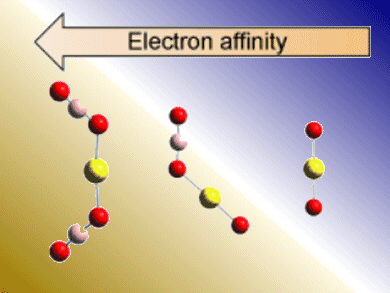Superhalogens are a class of molecules with a metal atom surrounded by halogen atoms, e.g., platinum hexafluoride, that possess large electron affinities.
Puru Jena and collaborators, Virginia Commonwealth University, USA, have theorized that electron affinity could be increased beyond the range of superhalogens by using superhalogens as building blocks, instead of halogens, around a metal atom. DFT-based calculations showed that the electron affinity of the hyperhalogen, Au(BO2)2, was 5.54 eV — 1.6 times larger than that of AuO2.
Judicious choice of superhalogen building blocks with electron affinities larger than BO2, could lead to hyperhalogens with even higher electron affinities. Further, if the central atom was a transition metal atom, the hyperhalogen could carry a magnetic moment to give a ferromagnetic insulator.
- Hyperhalogens: Discovery of a New Class of Highly Electronegative Species
M. Willis, M. Götz, A. K. Kandalam, G. F. Ganteför, P. Jena
Angew. Chem. Int. Ed. 2010, 49.
DOI: 10.1002/anie.201002212
- M. Willis, M. Götz, A. K. Kandalam, G. F. Ganteför, P. Jena
Angew. Chem. 2010, 122.
DOI: 10.1002/ange.201002212



